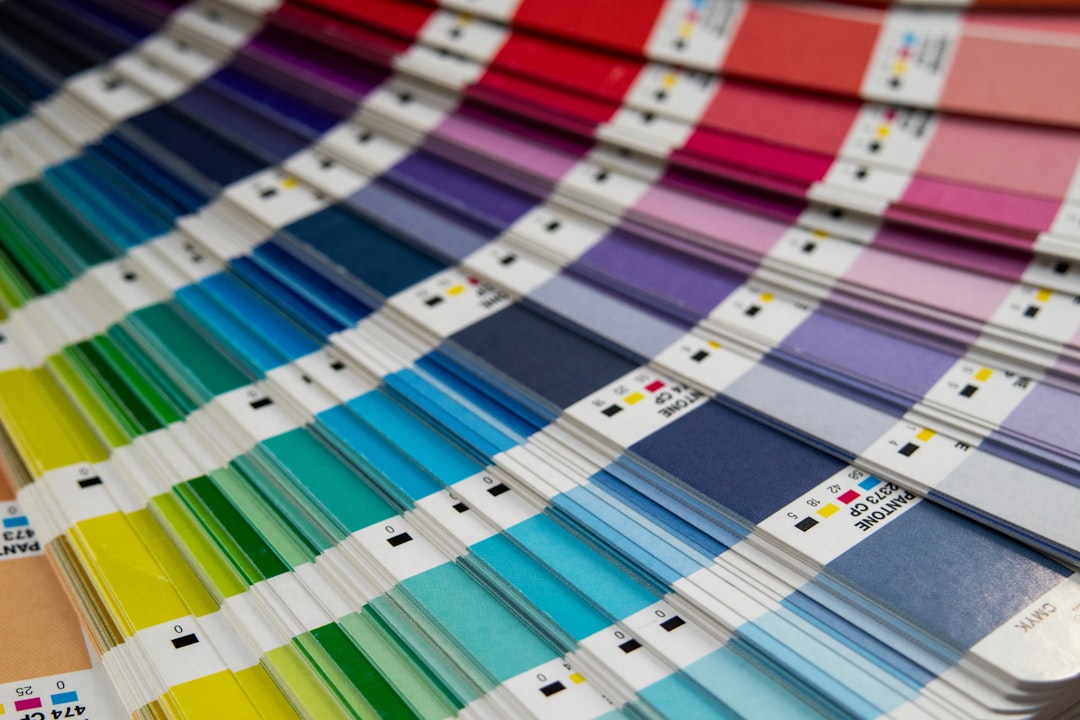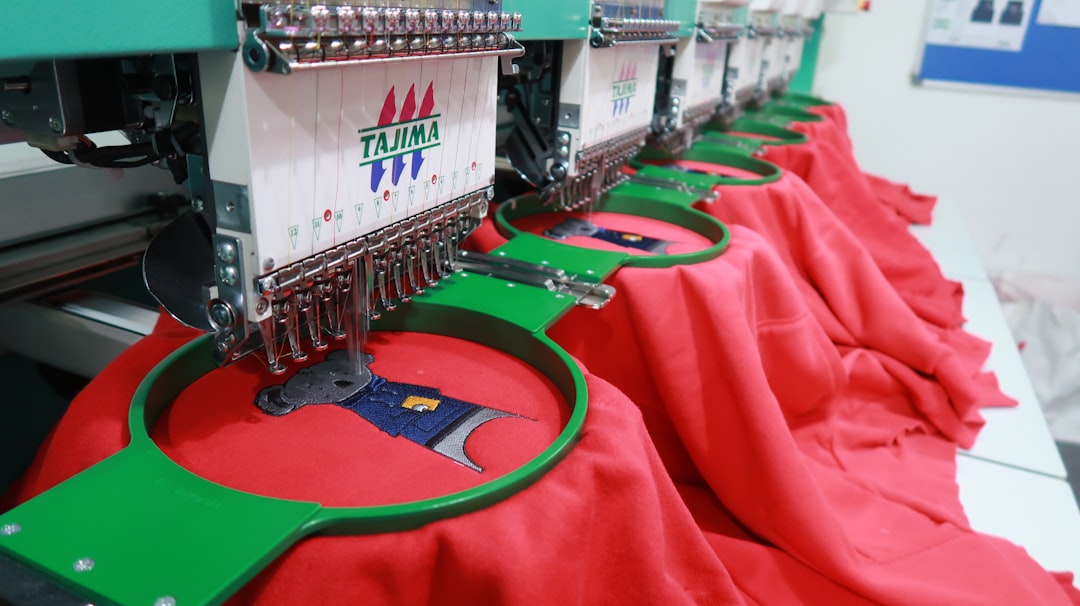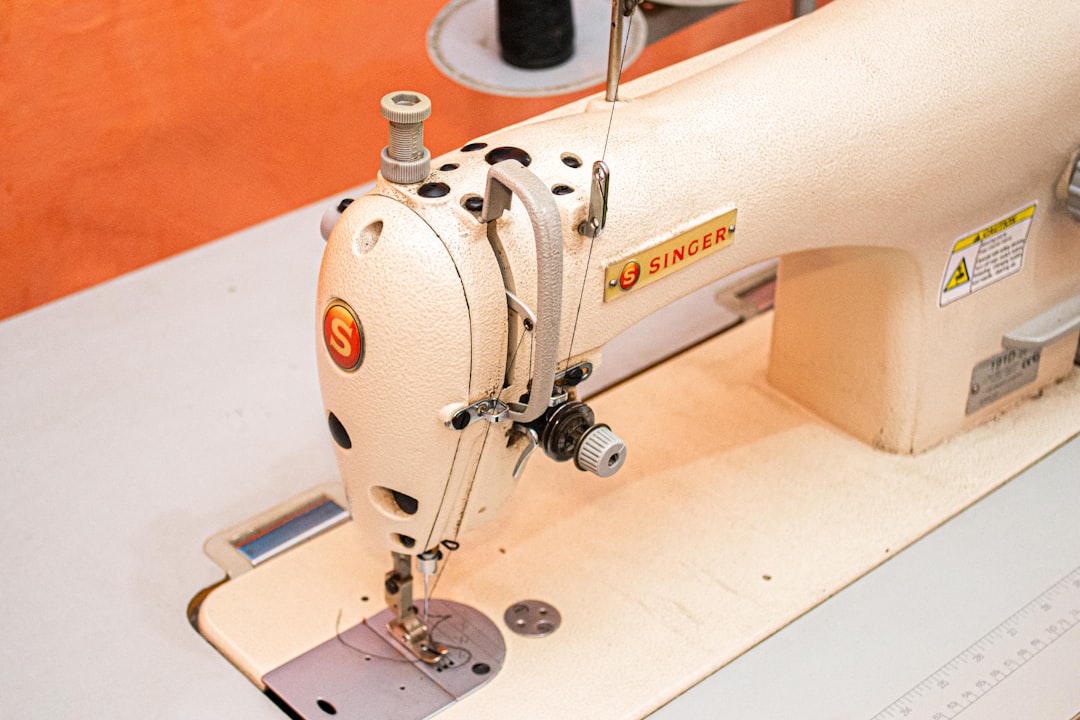

Engage prospects with a scan and streamline customer engagement with FREE QR code marketing tools by Sona – no strings attached!
Create a Free QR CodeFree consultation

No commitment

Engage prospects with a scan and streamline customer engagement with FREE QR code marketing tools by Sona – no strings attached!
Create a Free QR CodeFree consultation

No commitment
QR codes have evolved from a novelty to a strategic powerhouse, bridging offline engagement with online action for textile printing equipment suppliers. Connecting physical assets like DTG machines or promotional signage to digital experiences removes friction from the buying journey, surfaces timely customer insights, and enables meaningful interactions at every stage of the funnel.
As digital textile printing gains traction and customers expect faster, more sustainable, and more personalized solutions, suppliers feel pressure to adapt. Missed high-value prospects and delayed lead capture, common pain points in this sector, lead to critical lost opportunities. QR codes offer instant access to product information, technical documentation, interactive content, and real-time feedback, all from a single scan. This shift streamlines old workflows and gives companies control over customer touchpoints that were previously difficult to track.
Whether your focus is on accelerating sales cycles, supporting customers post-purchase, or closing data visibility gaps, integrating QR code technology can transform conventional approaches into scalable, connected engagement. Here is a strategic playbook for textile printing equipment suppliers ready to unlock new business outcomes and a truly data-driven buyer experience.

In the fast-moving textile printing landscape, suppliers often miss out on high-value opportunities because physical touchpoints are not linked to digital data capture. QR codes bridge this disconnect by turning every printed asset, machine label, and booth display into an instant path to information and conversion. A scan on a showroom DTG unit can route prospects to a high-intent demo form. A code on a dye-sublimation printer box can pull up a video setup guide. A label on a DTF machine can trigger a parts reorder.
Traditional analog processes invite delays and data loss. Printed catalogs go out of date. Paper lead forms get misplaced. Manual service requests clog inboxes. QR-enabled experiences remove these bottlenecks and deliver clean data directly to your CRM, while giving buyers a fast, self-service experience that aligns with how they research and purchase today.
Here is how to use QR codes to eliminate friction that leads to lost visibility:
By embedding QR codes into core workflows, textile printing equipment suppliers convert anonymous interest into attributable demand, maintain momentum between interactions, and build durable pipelines. Platforms such as Sona QR make it easy to design, deploy, and manage campaigns, while providing the analytics required to optimize program performance.

Textile printing equipment suppliers face persistent challenges that QR codes address directly. Buyers evaluate complex options across DTG, DTF, screen, and dye-sublimation technologies. They touch machines at trade shows, handle samples in showrooms, and receive print collateral from sales reps. Yet many of those offline signals do not connect to digital systems, leaving sales and marketing teams guessing who is interested, what they need, and how to prioritize follow-up.
QR codes compress that distance between curiosity and conversion. With a single scan, a production manager can load a maintenance video, a business owner can schedule a demo, and a dealer partner can access reseller pricing. Most importantly, those interactions become trackable. You can see where scans occurred, which asset triggered the action, and what happened next. The result is better forecasting, more precise outreach, and fewer missed windows of intent.
QR codes matter because they:
By integrating QR codes across the buyer journey, suppliers move from a reactive mindset to proactive engagement. Sales teams can act on intent signals immediately. Marketing can attribute pipeline to specific offline assets. Service departments can resolve issues faster with self-serve documentation.

QR codes are flexible by design. The format you choose should match the action you want the scanner to take and the context in which the scan occurs. Textile printing equipment suppliers can cover most use cases with a core set of formats that work reliably on boxes, manuals, signage, and swatch books.
For interactions that need to be adaptable over time, dynamic QR codes are best. They allow you to change the destination without reprinting and layer in tracking parameters for analytics. Static codes are useful for fixed assets that rarely change, such as a safety warning or a permanent plant Wi-Fi login.
Here are the most useful formats for this vertical:
Dynamic QR codes managed in a centralized platform like Sona QR help you update destinations across product lines, campaigns, and regions without disturbing printed assets that are already in the field. They also simplify experimentation with different content types and calls to action. Start creating QR codes for free.

Growth often hides in plain sight, especially in a heavy-equipment category where buyers gather information in person. QR codes bring those moments online so they can be measured, nurtured, and scaled. Focus on the physical touchpoints where your brand already interacts with prospects and customers. Then layer in QR experiences that map to the likely next action.
Consider how scans differ by placement. A trade show attendee might want a short comparison chart or a demo slot. An operator scanning a machine label likely needs a spare part, firmware download, or fault code guide. A buyer flipping through a lookbook may want to price a bundle that includes pretreat machines, dryers, or color management tools.
High-ROI placements include:
Each of these placements turns a physical interaction into an actionable data signal. Over time, the scan data reveals patterns about what information buyers need at each step, which empowers your team to refine content and invest in the channels that drive real demand.

QR code-driven workflows create a connected buyer journey that reaches from first touch to post-sale loyalty. Tailor each use case to the context in which the code is scanned, and make the next step unmistakably clear with a benefit-driven call to action.
Start with core actions that typically suffer from leakage or delays. Then expand into reorders, upgrades, and advocacy. Here are foundational use cases to prioritize:
When you combine these use cases with clear attribution, you can pinpoint which machines and content assets drive pipeline and where customers need more support. Over time, your QR strategy becomes a system of continuous buyer enablement.
Every QR scan captures intent, context, and timing. When you deploy unique codes across the entire journey, you can segment audiences based on who scanned, what they scanned, and where they scanned. That information transforms into precise retargeting and personalized follow-up that respects where each buyer is in the process.
In textile printing, your audiences often include distinct profiles, such as brand owners entering DTG for the first time, contract decorators scaling to a second shift, screen printers evaluating hybrid workflows, and in-plant teams upgrading legacy equipment. Segment your scans to reflect those differences. A designer scanning a swatch kit is not the same as a plant manager scanning a maintenance label.
Map your funnel with QR signals:
To make the most of this data:
With Sona QR, each code becomes a smart entry point. The platform enriches scans with metadata, visualizes funnels, and syncs segments to your existing tools so you can act immediately with high-confidence signals. For paid activation tactics, see Sona’s Playbook intent-driven retargeting. You can also browse Sona QR’s use case library for vertical ideas.
QR codes are the connective tissue that unifies print, events, direct mail, and digital. They turn passive impressions into measurable actions while feeding your analytics stack with real-world engagement that was previously invisible. For equipment suppliers working through dealer networks and multi-location showrooms, this unified view is essential to keeping teams aligned and responsive.
A connected funnel for textile printing often starts offline and finishes online. A buyer sees your machine at a show, scans for a comparison guide, later receives a direct mail bundle offer, and finally books a demo from a retargeting ad. The same scan data that captured their first interaction can power the rest of that sequence and attribute impact to your offline materials.
Here is where QR codes elevate your broader strategy:
Use a centralized platform like Sona QR to manage all codes, monitor performance, and sync scan activity with your CRM and ad platforms. That way, every channel becomes both a traffic driver and a data source.
Selecting the right use case ensures your QR code is not just scannable but also valuable. Start by identifying the recurring moments where leads are lost or delayed. For textile printing equipment suppliers, these often include crowded booths, unstaffed showrooms, post-sale onboarding, and consumables reorders that arrive by phone without attribution.
Define the purpose behind each code and the business outcome you want to achieve. If the goal is to capture demo interest at a trade show, the destination should be a short, mobile-friendly booking form tied to that event. If the goal is to reduce service tickets, route scans to a video guide library filtered by machine model.
Your code type should match the destination’s stability and your need for analytics. Static codes are fine for evergreen content that will not change, like a safety notice. Dynamic codes are the right fit when you want to track performance, update destinations, or attach campaign parameters for attribution.
Textile printing suppliers benefit from flexible, dynamic QR codes because product information evolves and campaigns often span multiple channels. You can A/B test destinations or quickly change a demo calendar link if the team’s availability shifts.
Start creating QR codes for free.
A QR code is only effective if people notice it, understand its value, and can scan it easily. Design with clarity and context. Incorporate brand elements without sacrificing contrast. Pair the code with a specific benefit-driven CTA that tells users exactly what they will get upon scanning.
Testing is essential. Validate scannability on glossy surfaces, curved housings, and at various distances. Simulate real lighting conditions at shows and showrooms. Confirm that destination pages load quickly on mobile devices and that any forms are short and autofill where possible.
Roll out your codes where they will have the most impact. Start with high-traffic or high-intent touchpoints and expand outward. Give special attention to dealer showrooms and traveling demo units where in-person interest is strong but often untracked.
Map placements to likely user behavior. At a booth, place large codes at eye level on banners for quick demos. On equipment, use durable labels near control panels for service documentation. On consumables, print smaller codes on cartons for one-tap reorders.
Tracking converts QR interactions into meaningful insights. Use UTM parameters and campaign naming conventions to maintain clean analytics. Monitor scan volume, locations, devices, and downstream conversion behavior. Attribute scans to outcomes like demo bookings, quote requests, or support deflection.
Optimization is an ongoing practice. Compare performance by placement and creative. Experiment with CTAs, landing pages, and content formats. Use scan data to inform where to invest budget and which assets to refresh. With Sona QR and Sona, an AI-powered marketing platform for identity, activation, and attribution, you can link scans to CRM records, attribute revenue, and visualize multi-touch journeys that include offline and online interactions. For methodology, see Sona’s blog on single vs multi-touch.
Accurately connecting scans to qualified leads, demos, or equipment orders is critical for suppliers who need to justify spend and refine their go-to-market strategy. With QR-based analytics, offline engagement becomes a measurable part of your pipeline. The path from scan to sale can be visible, attributable, and optimizable.
Traditional tools often stop at the scan. Modern platforms extend beyond the initial interaction to reveal how QR engagement influences the entire journey. You can see whether a scan resulted in a form fill, led to a sales conversation, or helped convert an order for a printer, dryer, or pre-treatment unit. That visibility lets teams invest confidently in the placements and messages that move buyers forward. For deeper strategy, read Sona’s guide to offline attribution.
With the right setup, teams can:
Sona QR captures detailed scan metadata in real time. Sona.com connects that engagement to known buyers through integrations and multi-touch attribution. Together, they give textile printing equipment suppliers a full-funnel view that includes the real-world interactions driving growth. To align engagement with buying signals, see Sona’s post on intent data.
Scaling QR impact comes down to clarity, consistency, and context. Make it obvious why someone should scan, ensure every scan triggers a valuable next step, and measure results across all placements. As your catalog, campaigns, and teams evolve, your QR strategy should evolve with them.
Focus on the media types common in this vertical. That often means booth signage, equipment labels, direct mail, and dealer collateral. Create a repeatable playbook that sales, marketing, and service teams can follow, and revisit quarterly to push improvements based on scan analytics and conversion data.
Practical best practices include:
As you refine the program, balance scale with specificity. Standardize your design and naming conventions, but keep destinations highly relevant to the physical context and buyer stage.
QR codes are more than a convenience. They are a foundation for strategic engagement and measurable growth in the textile printing equipment sector. By transforming products, manuals, and promotional assets into digital gateways, suppliers close data and attribution gaps while delivering instant value to buyers and operators. The result is faster cycles from interest to demo, better-informed purchasing decisions, and stronger post-sale relationships.
When deployed thoughtfully, QR codes connect the dots across print, events, showrooms, and packaging. They empower your teams to act on intent signals, personalize outreach, and attribute revenue to the exact touchpoints that matter. With platforms like Sona QR and Sona.com, you can generate codes, manage content, monitor performance, and tie outcomes back to pipeline so QR becomes a durable part of your marketing and revenue operations stack.
Adopting QR code integration is not about chasing a trend. It is about solving real-world challenges with scalable, data-driven methods. Each scan can be a step toward clearer measurement, stronger relationships, and sustainable growth for textile printing equipment suppliers.
QR codes have revolutionized the textile printing equipment suppliers industry by transforming traditional product information sharing into dynamic, measurable engagement opportunities. Whether it’s streamlining customer acquisition, enhancing after-sales support, or enabling instant access to detailed machine specs and tutorials, QR codes replace cumbersome printed manuals with instant, mobile-friendly connections that drive informed buying decisions and build lasting trust.
Imagine empowering your clients to scan a code on your equipment and instantly access real-time updates, troubleshooting guides, or exclusive offers—boosting satisfaction and loyalty effortlessly. With Sona QR, you can create dynamic, trackable QR codes in seconds, update content without reprinting labels, and link every scan directly to customer insights and revenue growth. No missed leads, no outdated info—just smarter, more effective supplier-customer relationships.
Start for free with Sona QR today and unlock the full potential of QR codes to elevate your textile printing equipment business to the next level.
Integrating QR codes bridges offline and online engagement, provides instant access to product information, enhances data capture, enables dynamic content updates, improves tracking and analytics, and supports faster, personalized buyer interactions.
Suppliers can place QR codes on machines, packaging, signage, and brochures to direct buyers to demo bookings, maintenance guides, reorder forms, and interactive content, eliminating friction and capturing real-time customer intent.
Dynamic QR codes are ideal for campaigns needing tracking and content updates, while static QR codes suit fixed information like safety notices and permanent documentation.
QR codes provide detailed scan metadata including location, time, and device, link scans to CRM records, and enable attribution of revenue and pipeline to specific offline touchpoints for better forecasting and optimization.
Effective placements include trade show booths, equipment packaging and labels, direct mail campaigns, showrooms, training materials, and sample swatch kits, each tailored to capture relevant buyer actions.
QR codes unify print, events, direct mail, digital signage, and social media by turning passive impressions into measurable actions and feeding engagement data into analytics and CRM platforms.
Suppliers should choose a clear use case, select the appropriate QR code type, design with clarity and test thoroughly, deploy codes strategically across channels, and continuously track and optimize performance using analytics.
QR codes provide easy access to maintenance videos, consumable reorder forms, firmware updates, and warranty registrations, reducing downtime and improving customer satisfaction through self-service resources.
Analytics reveal which assets drive high-value actions, enable segmentation of audiences by intent and location, support retargeting efforts, and allow teams to prioritize leads and optimize marketing investments.
Unique codes enable precise attribution of engagement and sales, help tailor follow-up communications, and provide detailed insights into buyer behavior across product lines, placements, and regions.
Use Sona QR's trackable codes to improve customer acquisition and engagement today.
Create Your FREE Trackable QR Code in SecondsJoin results-focused teams combining Sona Platform automation with advanced Google Ads strategies to scale lead generation

Connect your existing CRM

Free Account Enrichment

No setup fees
No commitment required

Free consultation

Get a custom Google Ads roadmap for your business






Launch campaigns that generate qualified leads in 30 days or less.
